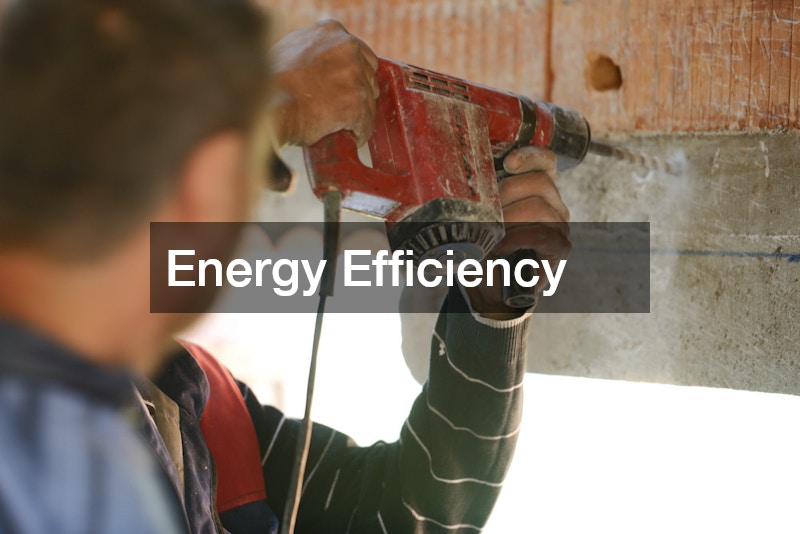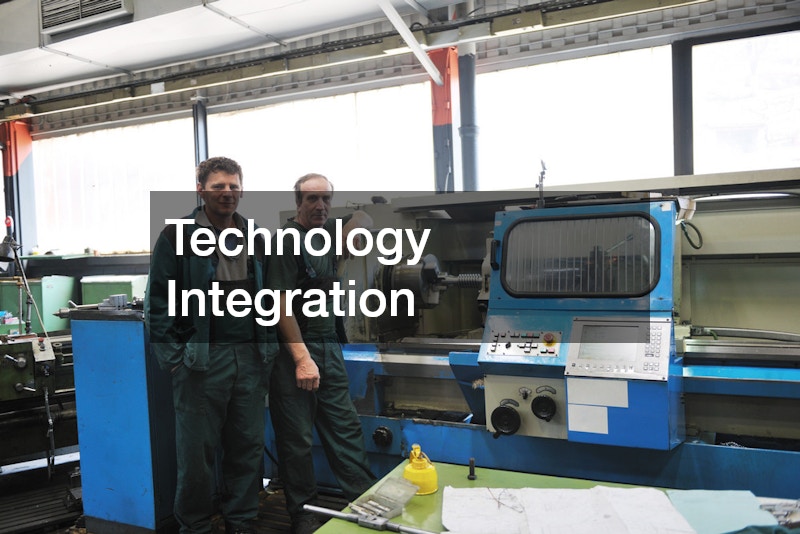Workshop upgrades are a crucial step in ensuring that your business or personal workspace operates at peak efficiency. Whether you’re running an architecture firm, a golf cart repair service, or even a custom framing business, modernizing your workshop can lead to increased productivity, enhanced safety, and better workflow management. Upgrades may range from simple improvements in storage solutions to high-tech advancements like automation and energy-efficient systems. Planning these upgrades effectively involves considering several factors, including the specific needs of your industry, budget constraints, and long-term goals.
For an architecture firm, for instance, optimizing workflow in the workshop can mean streamlining design processes and integrating advanced CAD systems. Meanwhile, a company focused on water pump maintenance may prioritize safety improvements to avoid accidents and increase operational efficiency. In both cases, scheduling the upgrades properly is key to minimizing disruptions to daily activities.
The following guide explores various areas of focus when upgrading your workshop, from equipment and tool storage to ventilation and energy systems. Each section is tailored to specific industries, like custom garage builders, countertop contractors, and plumbing repair services, to highlight the unique needs that different types of businesses must consider. By approaching your workshop upgrade in a structured way, you can maximize the return on investment and ensure that your workspace is ready for the challenges ahead.
Upgrading your workshop is not just about adding new tools or technologies—it’s about creating an environment that promotes efficiency, safety, and future growth. Below are ten essential areas to prioritize when planning your next workshop upgrade.
Workflow Optimization

For an architecture firm, workflow optimization in a workshop plays a critical role in ensuring smooth project progression. Workflow is the backbone of efficient design processes, from conceptualization to final blueprint production. To optimize your workshop, it’s essential to assess how each team member interacts with tools, machinery, and technology. Centralizing the drafting stations, streamlining access to modeling tools, and improving data flow through digital platforms can reduce downtime and facilitate better collaboration. Moreover, software integration for project management helps track design revisions, deadlines, and client feedback in real-time. Scheduling these workflow upgrades should be done during the off-peak season to avoid project delays.
In addition to streamlining physical workflow, optimizing communication channels within the workshop is equally crucial. Clear communication among team members, whether they are architects, draftsmen, or project managers, prevents misunderstandings and delays. Implementing a reliable communication system, such as project management software or collaborative tools like Slack or Microsoft Teams, can ensure that everyone stays on the same page. Regular team meetings, both in-person and virtual, help keep the lines of communication open, allowing for quick adjustments and ensuring all project goals are met efficiently.
Another important factor in workflow optimization is proper resource allocation. By analyzing the demands of each project, you can allocate the appropriate human and technical resources to avoid bottlenecks. For instance, ensuring that there are enough 3D printers or digital workstations during peak times can prevent a lag in production. Regularly updating software and equipment is also key to maintaining efficiency. Outdated tools not only slow down the process but can also lead to errors that will need to be corrected, costing both time and money. Investing in up-to-date technology keeps the workflow running smoothly and allows for more innovative and creative designs.
Finally, fostering a collaborative workspace culture is fundamental for workflow optimization. Encouraging team members to share ideas and offer feedback promotes a creative atmosphere and enhances problem-solving abilities. Open-plan workstations or break-out spaces within the workshop can facilitate spontaneous brainstorming sessions, where team members can easily exchange thoughts and ideas. Creating an environment that values collaboration, combined with well-organized workflow processes, ensures that each project is handled efficiently while allowing room for creativity and innovation to thrive.
Equipment Upgrades
For a business focused on golf cart upgrades, efficient equipment upgrades are paramount. The modern golf cart industry has seen an influx of technologically advanced components such as lithium batteries, GPS systems, and solar panels. Therefore, investing in high-quality, durable tools for handling these components can improve your ability to serve your clients effectively. Upgrading diagnostic tools, repair benches, and cart lifts ensures that your workshop is well-equipped to handle the latest models and repair techniques. Scheduling these upgrades should be done when the demand is lower, allowing for uninterrupted service.
In addition to equipment upgrades, staying up to date with the latest software advancements in the golf cart industry is essential. Many modern golf carts come with onboard systems that require specialized software for diagnostics and troubleshooting. Investing in software that can interface with a variety of golf cart models allows you to provide faster, more accurate repairs and upgrades. This not only enhances your service capabilities but also positions your business as a leader in innovation. Moreover, training your technicians to use this software effectively ensures they are capable of diagnosing and resolving issues with precision, further streamlining the workflow in your workshop.
Another critical aspect of efficient equipment upgrades is improving the layout and organization of your workspace. By strategically placing tools, components, and diagnostic stations, you can optimize the flow of work from intake to completion. For example, placing your repair benches near diagnostic tools and ensuring that common components like batteries and tires are within easy reach can significantly reduce the time spent searching for tools or parts. A well-organized workshop fosters an environment of productivity and reduces potential errors, which can ultimately lead to improved customer satisfaction and quicker turnaround times for repairs and upgrades.
Lastly, implementing a regular maintenance schedule for your tools and equipment can help prevent costly breakdowns and delays. Golf cart upgrades often involve precision work, and malfunctioning equipment can not only slow down the process but also compromise the quality of your service. By performing regular checks and servicing your tools, you ensure that they operate at peak efficiency. Additionally, this proactive approach can extend the lifespan of your equipment, reducing the need for frequent replacements and keeping your costs under control. A well-maintained workshop, paired with cutting-edge tools and technology, will enhance your business’s ability to meet the growing demands of the golf cart upgrade market.
Safety Improvements
In workshops dealing with water pumps, safety improvements are essential due to the nature of the equipment, which often involves high-pressure systems and complex machinery. Ensuring that your workspace is equipped with the latest safety tools, such as pressure release valves and automated shutoff systems, can prevent accidents and costly downtime. Regularly scheduling safety checks and integrating updated safety features is a non-negotiable part of running an efficient water pump service. Scheduling these safety upgrades should take place after thorough inspections to minimize risks and ensure compliance with industry standards.
In addition to implementing safety tools and regular inspections, providing ongoing training for your staff is crucial to maintaining a safe working environment in a water pump workshop. Ensuring that employees are well-versed in operating high-pressure systems, understanding emergency protocols, and properly utilizing safety equipment significantly reduces the likelihood of accidents. Training sessions should cover not only the technical aspects of machinery but also the importance of personal protective equipment (PPE), such as gloves, face shields, and ear protection, which are essential when dealing with high-pressure and noisy equipment. A well-trained team is better equipped to handle unexpected situations, ultimately enhancing both safety and productivity in the workshop.
Energy Efficiency

Energy efficiency is a growing concern in automotive repair workshops, especially those specializing in specific brands like Acura repair. By incorporating energy-efficient systems such as LED lighting, smart heating, and cooling units, and upgrading old electrical systems, you can significantly reduce energy consumption. Installing electric vehicle (EV) chargers can also open up new revenue streams while demonstrating a commitment to sustainable practices. Scheduling these energy-efficient upgrades during seasonal downtimes ensures minimal disruption to daily operations while preparing your workshop for future energy demands.
Electrical System Upgrades
In a plumbing repair workshop, electrical system upgrades can directly affect the performance and safety of the facility. With the increased reliance on advanced diagnostic tools and specialized machinery, outdated electrical systems may not be able to handle the load. Upgrading your electrical infrastructure to handle modern equipment will increase the reliability and safety of your workshop. Moreover, ensuring proper grounding, surge protection, and circuit upgrades reduces the risk of electrical hazards. Scheduling these upgrades during non-peak periods will ensure that daily operations are not compromised while keeping your workshop up to date.
Tool Storage Solutions
For a gravestone or monument company, efficient tool storage solutions are essential for maintaining productivity and organization. A gravestone company often requires a wide array of specialized tools for engraving, polishing, and cutting, which must be stored securely and accessed easily. Installing modular tool storage units, labeled shelving, and mobile tool carts can dramatically reduce time spent searching for equipment, allowing workers to focus on craftsmanship. Scheduling these upgrades during a slow business season ensures minimal disruption and maximizes the efficiency gains from improved organization.
Flooring Upgrades

Custom framing services often involve the use of heavy machinery, sharp tools, and delicate materials, making flooring upgrades a crucial consideration. High-durability, anti-slip flooring can improve safety and reduce wear and tear, particularly in areas of high foot traffic or where large equipment is moved frequently. Flooring materials such as industrial-grade epoxy or rubber matting can provide a safer, more durable surface, preventing accidents and improving overall workflow. Scheduling flooring upgrades during off-hours or weekends minimizes downtime while ensuring the workspace is ready for heavy-duty use.
Ventilation System
For custom garage builders, upgrading the ventilation system is critical to maintaining a healthy working environment. Dust, fumes, and chemicals can accumulate in enclosed spaces, making it essential to have a robust ventilation system in place. Installing advanced air filtration systems or upgrading existing ones can prevent long-term health risks for workers and improve overall air quality. This is particularly important when dealing with automotive paints, solvents, and adhesives. Scheduling ventilation upgrades during construction downtimes will help prevent interruptions in the building process while ensuring a safe environment for workers.
Lighting Enhancements
Adequate lighting is crucial for wooden cabinet contractors, where precision and detail work are key to quality craftsmanship. Enhancing the lighting in workspaces by installing high-lumen LED lights and task lighting can improve visibility and reduce eye strain. Adjustable lighting setups for detailed work areas, such as sanding or finishing stations, can lead to higher-quality outcomes and more satisfied clients. Scheduling lighting enhancements before starting new projects ensures minimal disruption to your workflow while increasing overall productivity.
Technology Integration

In the countertop contractor and installation industry, technology integration plays a major role in boosting productivity and precision. Integrating advanced cutting technologies like CNC machines or laser-guided tools can enhance the quality of your work and reduce human error. Additionally, incorporating software solutions for project management, client communication, and material inventory can streamline operations and ensure that deadlines are met. Scheduling technology integration during slower business periods ensures a smoother transition and gives your team time to adapt to the new systems without affecting customer service.
Upgrading your workshop is an investment that pays off in improved efficiency, enhanced safety, and long-term cost savings. Whether you are running an architecture firm, a golf cart upgrade service, or a plumbing repair company, the key to a successful workshop upgrade lies in planning and prioritizing the right areas for improvement. Workflow optimization, safety upgrades, and technology integration are just a few of the many aspects to consider when scheduling your upgrades.
When planning these upgrades, consider scheduling them during non-peak business periods to minimize disruption. This ensures that your operations continue to run smoothly while you invest in the future of your workshop. By focusing on areas like energy efficiency, electrical system upgrades, and tool storage solutions, you can create a more organized, productive, and safe work environment for your team.
Ultimately, a well-upgraded workshop not only improves daily operations but also enhances the quality of your output, making your business more competitive and sustainable in the long run. Prioritizing these critical areas ensures that your workspace is equipped to handle future challenges and continue delivering top-quality services to your clients.

